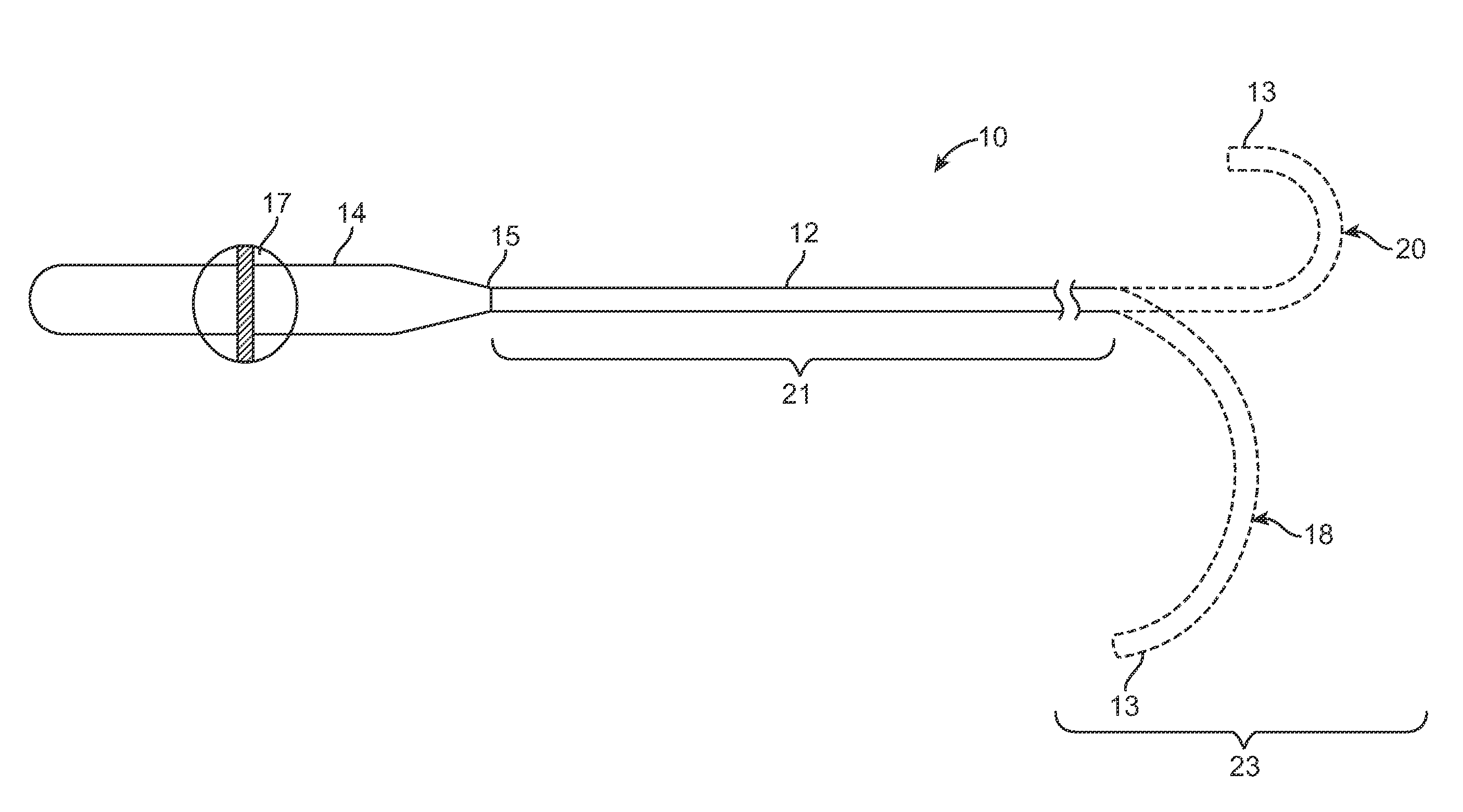Asymmetric dual directional steerable catheter sheath
a catheter and asymmetric technology, applied in the field of intravascular catheter introduction and positioning, can solve the problems of affecting the normal activation of the left and right arteries, so as to achieve the effect of increasing ease and decreasing distan
- Summary
- Abstract
- Description
- Claims
- Application Information
AI Technical Summary
Benefits of technology
Problems solved by technology
Method used
Image
Examples
Embodiment Construction
[0038]Referring to FIGS. 1A, 1A, 2A, and 2B, an exemplary assembly 200 constructed in accordance with the disclosed inventions is shown. The assembly 200 includes a catheter 100 and a steerable catheter sheath 10 sized for receiving the catheter 100 therein. In the illustrated embodiment, the catheter 100 is an ablation catheter or a mapping / ablation catheter and carries ablation and / or mapping elements on a distal end 102 thereof. The assembly 200 may further include a guide wire and / or other therapeutic tools (not shown) to be delivered into the left atrium in a desired position.
[0039]Although the steerable catheter sheath 10 is described hereinafter for use in the heart for facilitating introduction of the catheter 100 into desirable positions for mapping and ablating arrhythmia substrates, the sheath 10 may be used within any body lumens, chambers or cavities of a patient for therapeutic and diagnostic purposes in those instances where access to interior bodily regions is obtain...
PUM
 Login to View More
Login to View More Abstract
Description
Claims
Application Information
 Login to View More
Login to View More - R&D
- Intellectual Property
- Life Sciences
- Materials
- Tech Scout
- Unparalleled Data Quality
- Higher Quality Content
- 60% Fewer Hallucinations
Browse by: Latest US Patents, China's latest patents, Technical Efficacy Thesaurus, Application Domain, Technology Topic, Popular Technical Reports.
© 2025 PatSnap. All rights reserved.Legal|Privacy policy|Modern Slavery Act Transparency Statement|Sitemap|About US| Contact US: help@patsnap.com



